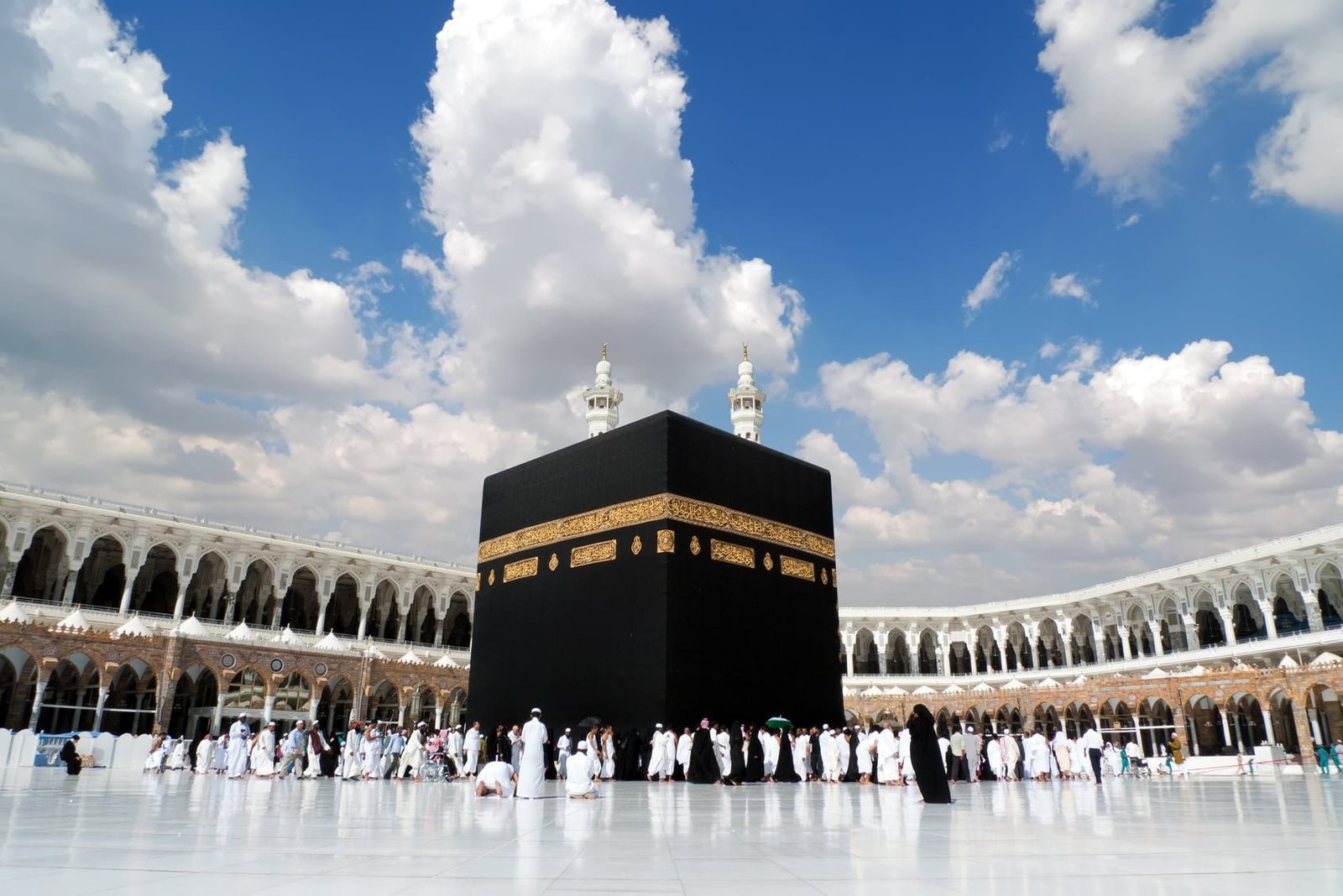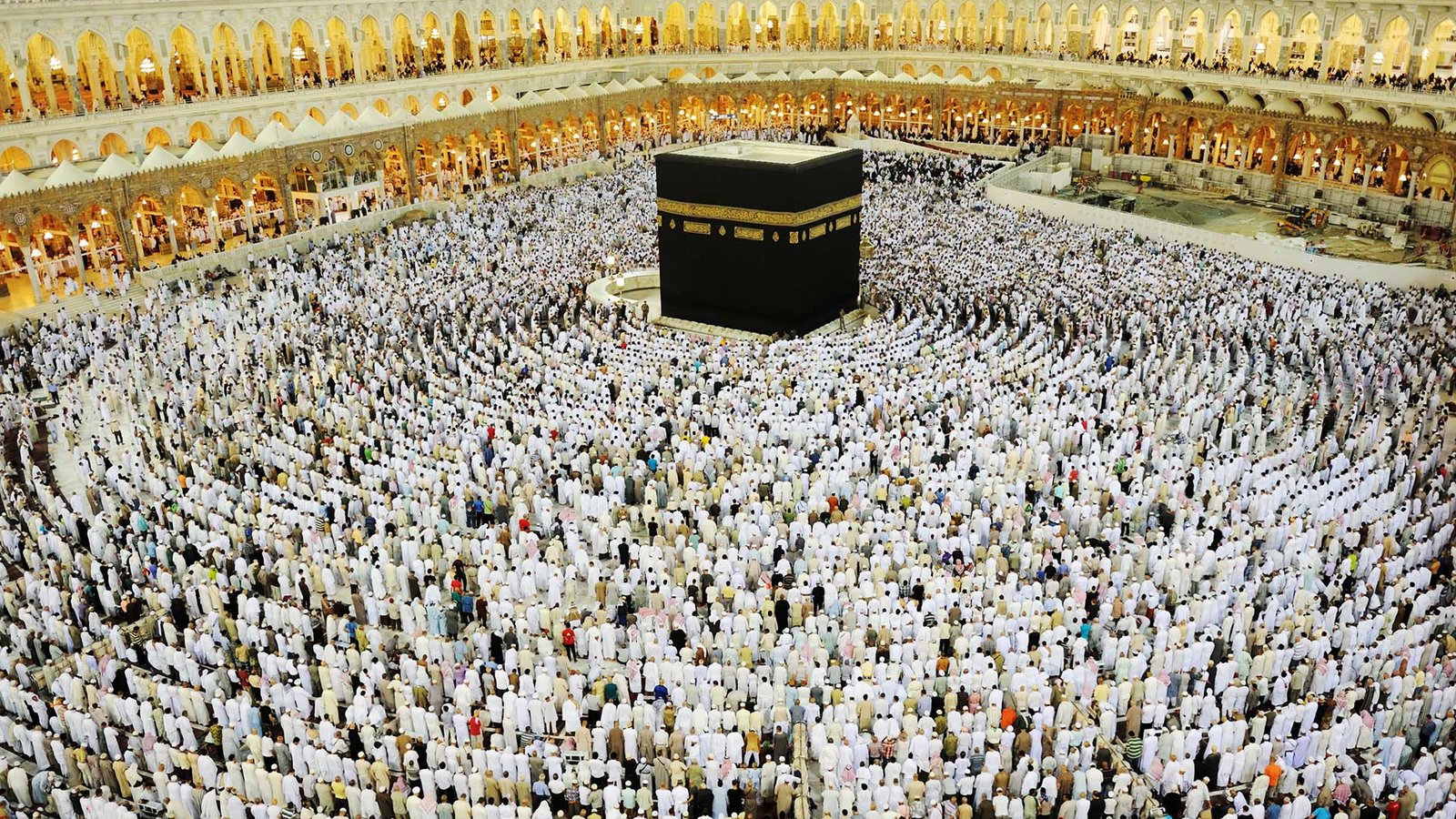
Hajj, one of the Five Pillars of Islam, is a sacred pilgrimage that holds immense significance in the lives of Muslims. It is a mandatory religious duty that every physically and financially able Muslim must undertake at least once in their lifetime. Hajj provides a unique opportunity to seek spiritual cleansing, forgiveness, and a closer connection to Allah. In this comprehensive guide, we will take you through the step-by-step process of how to perform Hajj, ensuring you embark on this sacred journey with devotion and understanding.
Table of Contents
Step 1: Purify Your Intentions (Niyyah)
Before embarking on the Hajj journey, it’s essential to purify your intentions. Make a sincere and pure intention in your heart, expressing your dedication to Allah and your desire to perform Hajj as an act of worship and obedience.
Step 2: Enter the State of Ihram
Ihram is a sacred state of consecration that marks the beginning of your Hajj journey. For men, it involves wearing two white, seamless pieces of cloth, while women should wear modest and simple clothing, adhering to the Islamic dress code. Ihram symbolizes purity, equality, and the shedding of worldly attachments.
Step 3: Arrival in Makkah
Upon reaching Makkah, ensure that you are in the state of Ihram before proceeding to the Masjid al-Haram, the grand mosque surrounding the Kaaba.
Step 4: Tawaf al-Qudum (Arrival Tawaf)
Begin your Hajj rituals with Tawaf al-Qudum, also known as the Arrival Tawaf. Perform seven circumambulations around the Kaaba in a counterclockwise direction, starting from the Black Stone corner. As you do so, recite supplications and praises to Allah.
Step 5: Sa’i Between Safa and Marwah
After Tawaf, perform Sa’i by walking seven times between the hills of Safa and Marwah. Begin at Safa, recite supplications, and walk briskly between the two points. This act commemorates Hagar’s search for water for her son Isma’il and symbolizes her unwavering trust in Allah.
Step 6: Rest and Reflection
After Sa’i, take time to rest and reflect on your journey. This is an opportunity for personal supplication and self-reflection.
Step 7: Stay in Mina
On the 8th of Dhul-Hijjah, proceed to Mina and stay overnight in this sacred tent city. Here, you will offer the five daily prayers and engage in acts of worship and reflection.
Step 8: Arafat
On the 9th of Dhul-Hijjah, leave Mina for Arafat. Stand in the vast plains of Arafat and engage in prayer, supplication, and deep reflection. This is the most crucial aspect of Hajj.
Step 9: Return to Muzdalifah
After Arafat, head to Muzdalifah, where you’ll engage in prayer and supplication. Collect pebbles for the Stoning of the Devil ritual.
Step 10: Stoning of the Devil
Return to Mina and perform the Stoning of the Devil ritual by throwing seven pebbles at the Jamarat, symbolizing the rejection of temptation and evil.
Step 11: Sacrifice and Haircut
Following the Stoning, it is customary to perform an animal sacrifice, symbolizing Ibrahim’s willingness to sacrifice his son Isma’il. After this, men should shave their heads, while women should trim a small portion of their hair, symbolizing humility and purification.
Step 12: Tawaf al-Ifadah
Return to Makkah to perform Tawaf al-Ifadah, similar to Tawaf al-Qudum but with specific supplications. This act signifies your renewed commitment to Allah.
Step 13: Sa’i and Stoning
Perform Sa’i again if you have not already, and return to Mina to perform the Stoning of the Devil for the following days.
Step 14: Farewell Tawaf
Before leaving Makkah, perform Tawaf al-Wida, the Farewell Tawaf, to bid farewell to the holy city and express gratitude to Allah.
Step 15: Departure
After completing the necessary rituals, you can leave Makkah and return home.

Conclusion
Hajj is a deeply spiritual journey that requires devotion, patience, and self-reflection. While this guide provides a structured approach to Hajj, remember that the sincerity of your heart and your connection with Allah are of paramount importance. May your Hajj journey be accepted, and may it bring you spiritual growth, inner peace, and a stronger bond with the Almighty Allah.
FAQs
Q1: What is the significance of Hajj in Islam?
A1: Hajj is one of the Five Pillars of Islam and holds immense spiritual significance. It is a mandatory pilgrimage for Muslims who are physically and financially able. Hajj is a journey of self-purification, devotion to Allah, and unity among Muslims.
Q2: What is the difference between Umrah and Hajj?
A2: Umrah is a non-mandatory pilgrimage that can be performed at any time of the year, while Hajj is obligatory and has specific rituals during the Islamic month of Dhul-Hijjah.
Q3: Do I need to be in a state of Ihram before reaching Makkah?
A3: Yes, you should enter the state of Ihram before crossing the Miqat (boundary) on your way to Makkah. This marks the beginning of your Hajj pilgrimage.
Q4: Can I perform Hajj on behalf of someone else (proxy Hajj)?
A4: Yes, it is possible to perform Hajj on behalf of someone else, such as a deceased family member. This is known as “Hajj al-Badl.”
Q5: Can women perform Hajj without a Mahram (male guardian)?
A5: Generally, women are required to have a Mahram (male guardian) accompany them for Hajj. This rule is in place to ensure their safety and well-being.
Q6: What is the significance of Tawaf al-Qudum (Arrival Tawaf)?
A6: Tawaf al-Qudum is a symbolic act of devotion, and it’s the first ritual of Hajj. It signifies your arrival in the holy city of Makkah and your intention to perform Hajj.
Q7: Can I combine Umrah with Hajj in the same journey?
A7: Yes, it is possible to combine Umrah with Hajj in the same journey. This is known as “Umrah al-Tamattu” and is a common practice.
Q8: What should I do if I make a mistake during Hajj?
A8: If you make a mistake during Hajj, correct it immediately and continue with the pilgrimage. Mistakes can include forgetting a step or not performing a ritual correctly.
Q9: Is there a specific time for Hajj, or can it be performed at any time of the year?
A9: Hajj has a specific time frame and is performed during the Islamic month of Dhul-Hijjah. Umrah, on the other hand, can be performed at any time of the year.
Q10: Can I combine Hajj with a visit to other holy sites in Saudi Arabia?
A10: Yes, many pilgrims combine their Hajj journey with visits to other significant Islamic sites in Saudi Arabia, such as Medina and other historical locations.
Q11: What should I do if I fall ill during Hajj?
A11: If you fall ill during Hajj, prioritize your health and seek medical attention if necessary. Completing Hajj is not obligatory if you are unwell.
Q12: Is it necessary to have a guide or agent to perform Hajj?
A12: While it’s not mandatory, having a guide or agent can be helpful, especially if it’s your first time performing Hajj. They can provide guidance and assist with logistics, ensuring a smoother pilgrimage experience.
Read Also
Rabi al Awwal – All You Need to Know
Importance of Online Quran Learning
Benefits of Reciting the Quran
Marriage in Islam – All You Need to Know
Idara al Furqan Academy: A Modern Way To Learn Quran
Why Should You Recite the Quran Daily?
Islamic Finance – Principles, Practices, and Impact
Enlightening Life Through Quran and Sunnah

